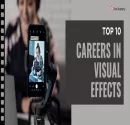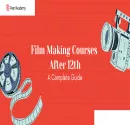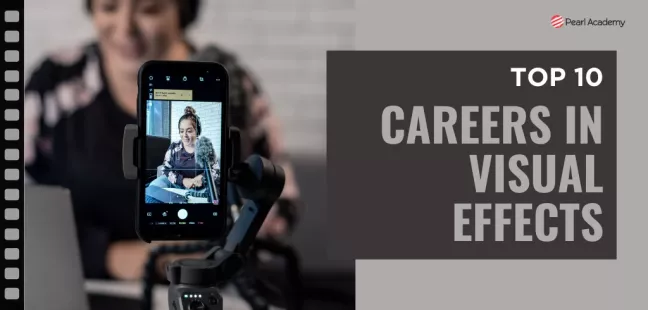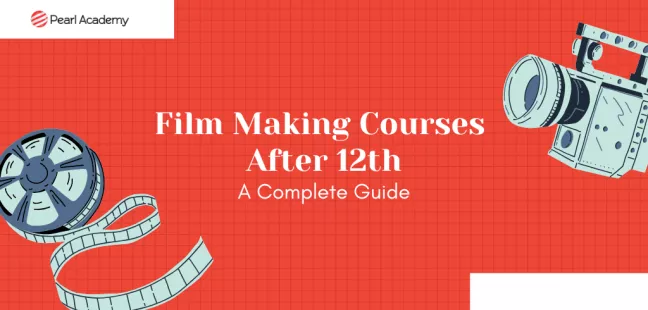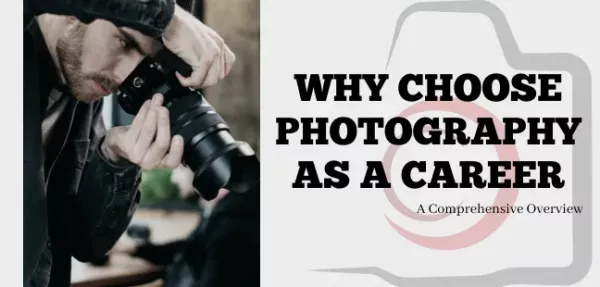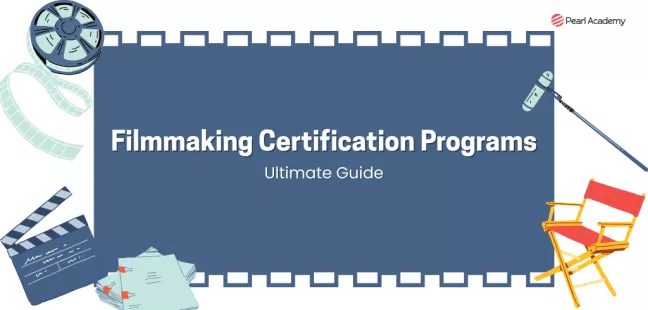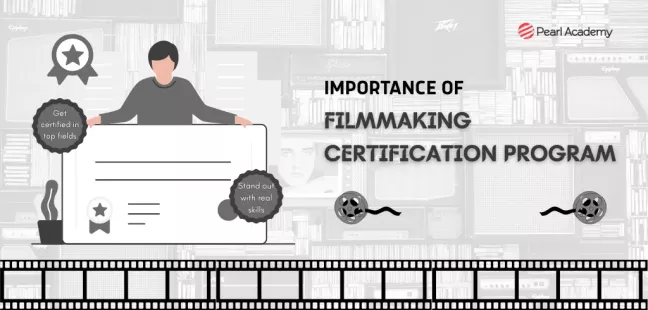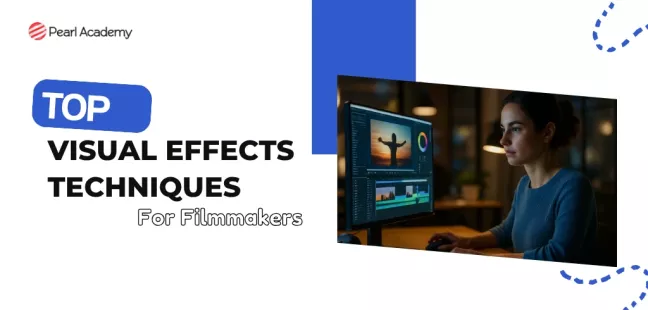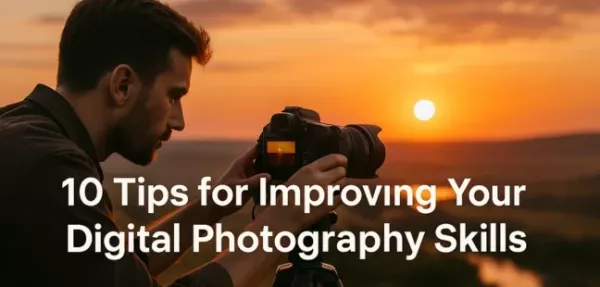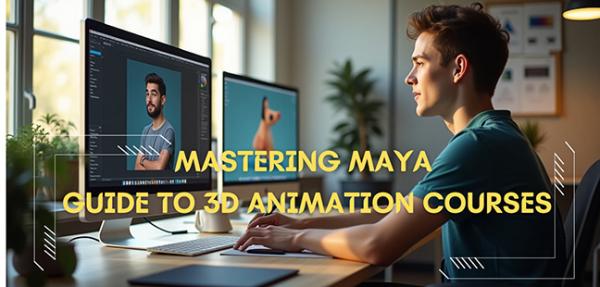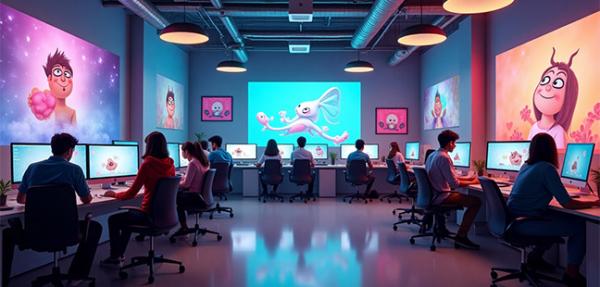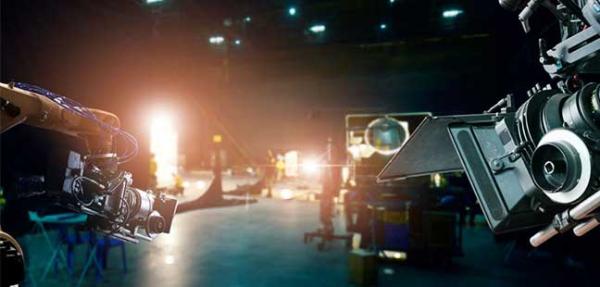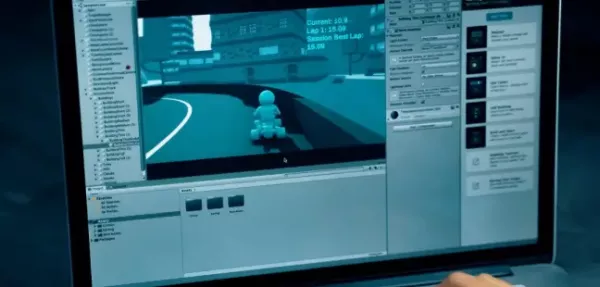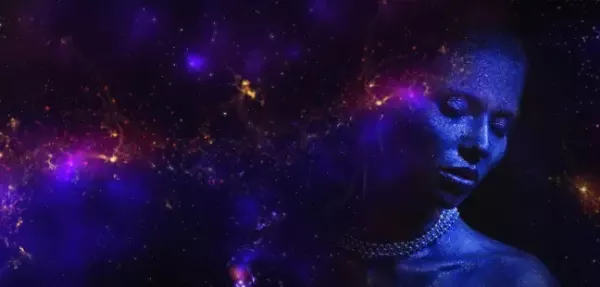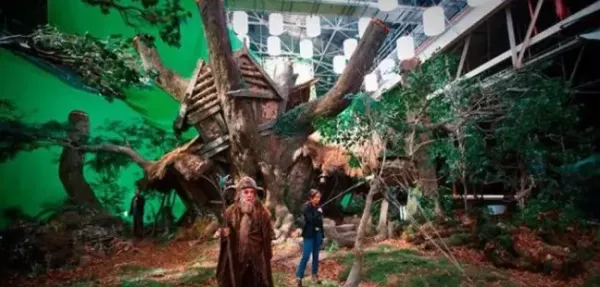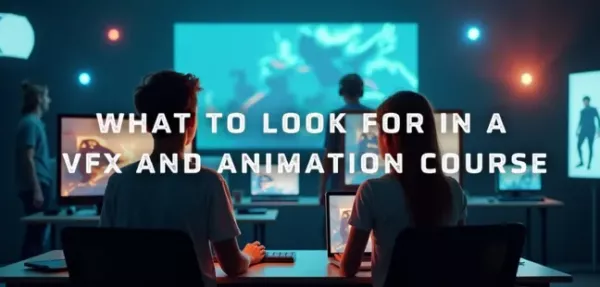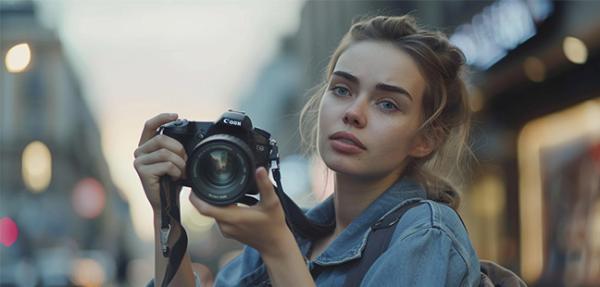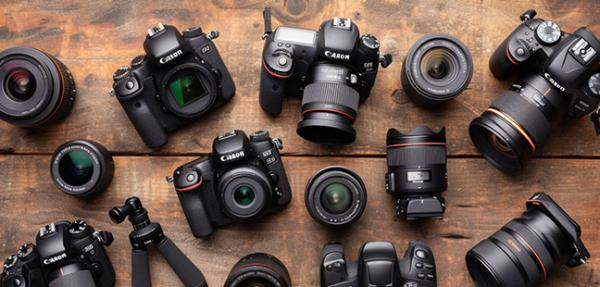AI in Photography: 12 Powerful Tools and Techniques Transforming 2026
- Editorial Team
- Published 02-Sep-2025
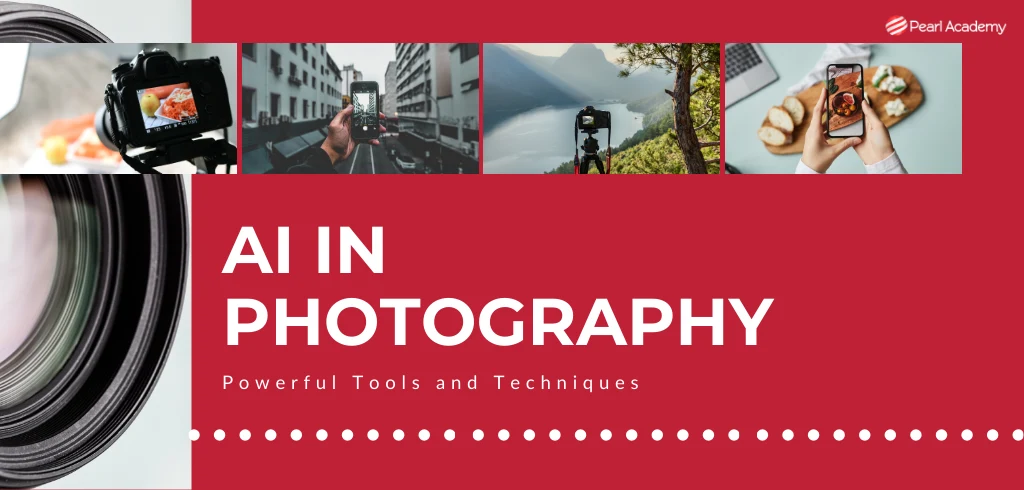
- What is AI in Photography?
- Evolution of AI in Photography
- Why AI is Transforming Photography in 2026
- AI Photography: The New Creative Frontier
- How to Use AI in Photography
- AI Tools for Photography: Must-Know Software & Apps in 2026
- AI Tools for Photographers: Choosing What Works for You
- Popular AI Photography Tools in 2026
- Why Traditional Education Still Matters—Pearl Academy's Photography Certificate
- Final Reflections: Embrace AI, but Learn to Lead
Artificial intelligence (AI) has seeped into nearly every creative field, and photography is no exception. In 2026, AI in photography is not just an optional add-on; it’s a central force reshaping how we capture, edit, and share images. From smart cameras that adjust settings automatically to AI-powered editing tools that deliver studio-quality results in seconds, the fusion of technology and artistry has never been more exciting.
But what makes 2026 so special? The rapid advancements in machine learning, computer vision, and generative AI have finally matured, giving both professionals and hobbyists powerful tools that were once unimaginable.
Let’s explore the evolution, tools, techniques, and ethical considerations driving this new era of photography.
Become future-ready with our Film Programs
Know MoreWhat is AI in Photography?
AI in Photography refers to the use of machine learning algorithms and computer vision to assist in image capture, enhancement, editing, and organization. Unlike traditional tools, AI doesn’t just follow rules—it learns from millions of images, predicting what looks good, correcting flaws, and even generating new visual elements.
Think of it this way: while photographers bring creativity, style, and intent, AI handles repetitive tasks, suggests enhancements, and even inspires new directions. From automatic sky replacements to AI-driven composition guidance, the technology is enhancing both technical precision and artistic freedom.
Evolution of AI in Photography
From manual editing to AI automation
In the early 2000s, editing photos was a time-consuming process requiring technical skill. Tools like Photoshop offered flexibility, but they also demanded years of practice. Fast forward to today, and AI can retouch portraits, balance lighting, and remove imperfections instantly—all with minimal input from the photographer.
Key breakthroughs in AI imaging technology
- Deep learning models now recognize and enhance objects within an image.
- Neural networks can recreate lost details in blurry or low-resolution shots.
- Generative adversarial networks (GANs) create realistic textures and lighting effects.
These breakthroughs have set the stage for AI photography tools in 2026 that rival human-level creativity.
Why AI is Transforming Photography in 2026
Several factors make 2026 a turning point for AI in Photography:
- Speed and Automation – Hours of editing can now be done in seconds.
- Personalization – AI tools adapt to individual editing styles.
- Accessibility – Even beginners with smartphones can achieve professional-quality results.
- Industry Integration – Fashion, advertising, and film are adopting AI at scale, driving demand for AI-skilled photographers.
The result? A democratization of photography, where both aspiring students and seasoned professionals can harness AI to elevate their craft.
AI Photography: The New Creative Frontier
Those interested in choosing photography as a career should know Artificial intelligence is redefining photography by augmenting both technical precision and creative choices. AI is now deeply embedded across camera systems and editing platforms:
- Smartphone hardware enhancements: Devices like the newly launched Pixel 10 series feature AI‑powered Camera Coach, offering real‑time advice on framing, lighting, and composition while you shoot. AI also enables staggering zoom reconstruction up to 100× though it relies on algorithmic interpretation rather than pure optics.
- On‑device generative editing: Features such as “Ask Photos” let users make complex edits, like adding, removing, or restoring elements, via typed or spoken instructions.
- Advanced generative platforms: Adobe’s Firefly (Model 4 and Ultra) powers realistic image generation, moodboarding, and integration across tools like Photoshop, Illustrator, Premiere Pro, and Lightroom.
- Transparent, controlled editing: Google’s Gemini app now supports iterative, multi‑turn editing with style‑mixing, all while embedding visible watermarks using SynthID for content authenticity.
AI is thus becoming a silent collaborator, guiding creativity, streamlining workflows, and helping photographers make intelligent decisions both before and after the shutter clicks.
How to Use AI in Photography
To truly harness the potential of AI in Photography, here’s a practical, step‑by‑step guide:
- Compose smarter with AI assistants: Activate real‑time tools like Camera Coach on compatible devices. Let AI critique framing, lighting, and pose, empowering you to learn and refine as you shoot.
- Make edits via natural language: Use tools like “Ask Photos” (Pixel) or Adobe's natural‑language editing workflows in Photoshop to quickly achieve precise edits—instruct the AI with commands like “remove that car” or “brighten the shadows”.
- Iterate and refine with generative tools: Platforms like Gemini let you apply changes in multiple steps (“change background”, “add more contrast”) while maintaining likeness and style consistency.
- Verify authenticity: With AI editing now common, tools embed content credentials (e.g. via SynthID) so you—and viewers—know what’s AI‑generated.
- Creative moodboarding with Firefly: Use Firefly Boards to explore styles, gather ideas in generative moodboards, and then carry those concepts into image creation.
Different variations of photography can take the help of AI to enhance what’s captured, improve techniques, light, final photo, and more.
AI Tools for Photography: Must-Know Software & Apps in 2026
Here’s a curated list of standout AI tools for photography available in 2026:
- Aftershoot & Aftershoot Retouch – Ideal for culling large batches and retouching portraits, these tools help photographers work faster while maintaining style consistency.
- Lightroom & Photoshop (Adobe AI features) – Industry staples with powerful AI capabilities, useful for precise edits and compositing.
- Topaz Photo AI – Renowned for rescue work, enhancing clarity, reducing noise, sharpening details effectively.
- Luminar Neo, Canva, and Pixlr – User-friendly editors with built‑in AI features: from one‑click enhancements to mobile‑friendly design tools.
- Lensa, Remini, Photoleap – Mobile apps delivering context‑aware suggestions, portrait enhancements, and real‑time editing.
- Fotor – Offers AI background removal, enhancement, headshot generation, and even video editing tools; continually expanding its AI suite.
- Retouch4me – A suite of AI plugins for Photoshop/Lightroom/Capture One; automates tasks like skin tone correction, background cleanup, and more—offline and customizable.
- Radiant Photo 2 – One‑click optimization tool that intelligently analyzes images and applies custom corrections locally, preserving privacy and speed.
- Imagen AI, Pic‑Time, HoneyBook, Focal, Fathom – Tools geared toward business automation: post‑production, client galleries, business management, and note summarization for photographers.
- Artisse AI – A mobile app that builds personalized AI models from user selfies to generate styled images, experiment with looks, or create marketing assets.
AI Tools for Photographers: Choosing What Works for You
Photographers should select AI tools based on their workflow stage and needs:
| Workflow Phase | Recommended AI Tools |
| Capture & Learning | Camera Coach (Pixel 10), AI-guided frame critique |
| Batch Editing & Culling | Aftershoot, Imagen AI |
| Creative Retouching | Photoshop (with Firefly), Retouch4me, Radiant Photo, Topaz Photo AI |
| Mobile Workflow | Lensa, Remini, Fotor, Artisse AI |
| Business Automation | Pic‑Time, HoneyBook, Focal, Fathom |
| Creative Ideation | Firefly Boards, Gemini nano Banana |
These tools enhance efficiency, creative potential, and help with the business side of photography—whether you’re shooting portraits, events, landscapes, or building your brand.
Popular AI Photography Tools in 2026
| Tool/Software | Key Feature | Best For | Example Use Case |
| Adobe Firefly | Generative AI for backgrounds | Creatives & advertisers | Replace dull backgrounds |
| Luminar Neo | AI retouch & enhancement | Portrait & lifestyle photography | Automated skin correction |
| Topaz Labs | Noise reduction & upscaling | Low-light photography | Reviving noisy night shots |
| Retouch4me | Automated retouching workflows | Professional studios | Bulk editing 500+ headshots |
| DeOldify | Photo restoration | Archivists, historians | Restoring 1940s film negatives |
| Canon/Sony AI Cams | Autofocus, framing suggestions | Events & fashion photographers | Tracking subjects in motion |
Why Traditional Education Still Matters—Pearl Academy's Photography Certificate
Even amid the rise of AI, foundational skills remain essential. Pearl Academy’s Professional Certificate in Photography (11‑month, industry‑oriented, studio and outdoor focus) offers hands‑on mastery of DSLR tools, lighting, composition, and techniques foundational to photography. This kind of structured learning ensures you build deep technical knowledge, then integrate AI tools meaningfully into your craft—not rely on them blindly.
Pearl Academy's learning model—delivered by industry professionals, supported with studio access, portfolio projects, and EMI options—empowers both aspiring and practicing photographers to adapt and lead in the AI‑enhanced creative landscape.

Student Guidance Center: Our Counselors are Just a Click Away.
Final Reflections: Embrace AI, but Learn to Lead
By 2025, AI in Photography is less about replacement and more about collaboration. Real-time guidance, generative editing, smart automation—all are here to accelerate both technical and creative workflows. But the true advantage goes to those who understand composition, light, color, and storytelling.
AI tools, from Pixel’s Camera Coach to Firefly’s moodboarding, Retouch4me’s plugins to Radiant Photo’s one-click magic, are only as powerful as the human vision they amplify. Pairing strong foundational education like Pearl Academy’s with savvy use of AI ensures you’re not just keeping pace but defining the future of photography.
Tags
- #Film
Pearl Admission Enquiry
Subscribe to Pearl Blogs
By clicking the "Subscribe" button, I agree and accept the privacy policy of Pearl Academy.






